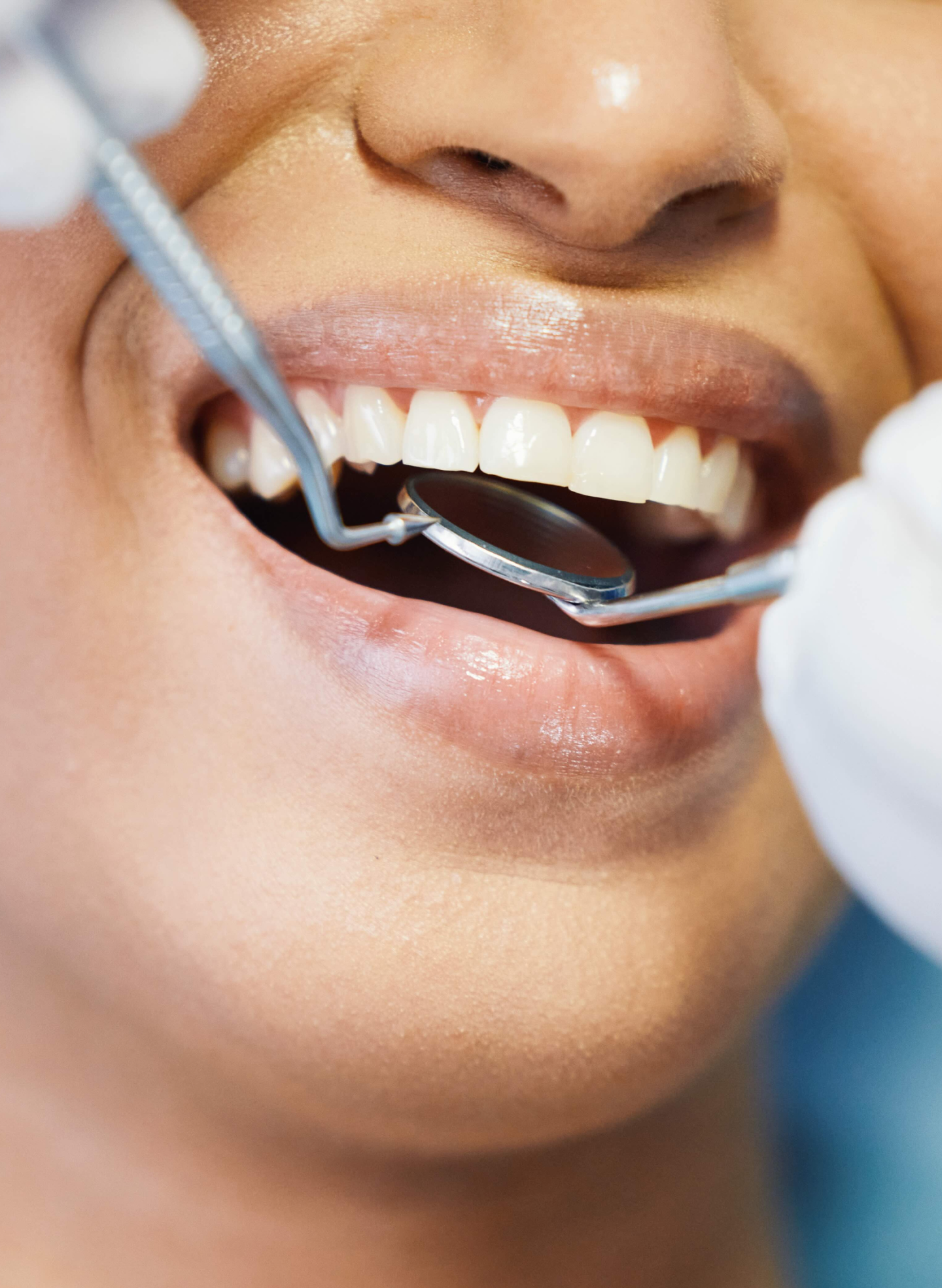Last updated 12.24.2024
How to stop bleeding after a tooth extraction
Learn how to manage bleeding after tooth removal: what's expected, when to worry, and when to contact your dentist.

Just get a tooth pulled? You may be wondering how to stop the bleeding and recover smoothly. While some bleeding is normal, there are effective ways to manage it. This guide provides simple tips to help reduce or stop bleeding, so you can heal comfortably and return to your routine.

Tips to stop bleeding after your tooth extraction
Bleeding after a tooth extraction is a normal part of the healing process, but with the right care, you can keep it under control. Here are some pro-tips:
Use wet gauze
A quick and easy way to stop bleeding after a tooth extraction is by using wet gauze. Grab a clean piece of gauze, fold it into a small square and place it over the extraction site. Bite down firmly for 45 to 60 minutes. This pressure helps form a blood clot, which is crucial for healing.
Keep your mouth still and try not to talk or use any excessive movement while you wait. If bleeding continues, swap out the gauze for a fresh piece and try again. Make sure the gauze is damp, because dry gauze may pull out the clot when you remove it.
It’s normal for the gauze to get bloodstained, but if it’s completely soaked, reach out to your dentist for advice.
Avoid smoking and drinking
After a tooth extraction, try to avoid smoking and drinking alcohol to aid in your healing.
Smoking can mess with blood clots and lead to dry socket, which can be painful and also potentially cause infection. If you smoke, try to hold off for at least 48 hours. Nicotine patches could help you get through the process.
Alcohol can also slow down healing and cause more bleeding. Swap out alcoholic drinks for electrolyte water and juices to stay hydrated and support your body’s healing.
It’s best to consult with your dentist to find a healing plan that works best for you.
Use a tea bag
Believe it or not, a tea bag can help stop bleeding after a tooth extraction. Black tea has tannic acid, a natural coagulant that aids in clotting. Just dampen a cooled tea bag, place it on the extraction site, and bite down gently for about 30 minutes.
Make sure the bag isn't too dry. Moisture is key for it to work. Afterward, you should see less bleeding and a stable clot.
Elevate your head
By keeping your head elevated above the heart, you reduce blood pressure at the wound site, which helps control bleeding. Try propping yourself up with pillows while resting or sleeping during the first few days after the procedure.
Avoid lying flat as this can make things worse. Instead, go for a comfy reclined position to reduce swelling and speed up recovery, so you can get back to your routine faster.
Stick to soft foods for the first few days
Your diet plays a big role in how you heal after an extraction. During recovery, stick to soft and cool foods like yogurt, mashed potatoes, smoothies and lukewarm soup.
Skip hard, crunchy or hot foods as they can irritate the site or dislodge the clot. Also, avoid straws at all costs. The suction can hinder healing and disrupt the clot. Take small bites and chew slowly on the opposite side to keep discomfort at bay. Learn more about what to eat after tooth extraction here.

How long will it take for my tooth extraction to stop bleeding?

Mild bleeding following a tooth extraction is typical within the first 24 hours. During this period, you may also experience some swelling and discomfort, which are normal parts of the healing process. However, these symptoms should gradually subside as your body begins to heal.
It's important to maintain good oral hygiene during this time. Gently rinse your mouth with saltwater to help cleanse the area but avoid vigorous spitting. And don’t forget to follow your dentist’s aftercare tips.
Why is clotting important after a tooth extraction?
Clotting is super important after a tooth extraction. It protects your exposed bone and nerves while you heal. Without a good clot, you risk a dry socket, which can cause severe pain, infection and delay healing. Plus, the clot helps new tissue grow and seals the wound as it heals.
To help your clot stay put, skip the straws, avoid forceful rinsing and don’t drink hot liquids. Taking care of that clot will lead to a smoother, less painful recovery.
What happens if bleeding doesn’t stop after a tooth extraction?
Sometimes, bleeding after a tooth extraction can last longer than expected. If you experience heavy bleeding for more than 24 hours, increased swelling or signs of infection, it’s important to contact your dentist right away. These could indicate complications needing quick attention.
Your dentist might suggest using a hemostatic agent or prescribe antibiotics to prevent infection. If you have any worries about your recovery, don’t hesitate to contact your Aspen Dental care team for help.

Tooth extraction bleeding FAQs
Am I able to swallow blood after a tooth extraction?
Swallowing small amounts of blood is common after a tooth extraction and generally not harmful. However, if you’re swallowing significant amounts, it may indicate excessive bleeding, and you should consult your dentist. Note that a drop of blood mixed with saliva looks like a lot of blood. Make sure to consult with your dentist for any concerns that come up.
Can I sleep if my tooth extraction is still bleeding?
While it’s safe to sleep if your extraction site is still bleeding, avoid sleeping with gauze in your mouth to prevent choking. Elevate your head to reduce bleeding and use a towel to protect your pillow from stains.
Can I eat if my tooth extraction is still bleeding?
Eating is permissible but stick to soft foods, like applesauce, yogurt, mashed potatoes, soft fruits and hummus, that won’t disrupt the extraction site. Avoid crunchy or hard foods until the bleeding subsides and healing progresses.
What are the warning signs of a dry socket?
Signs of a dry socket include severe pain that doesn’t improve, a foul taste or odor in the mouth, and visible bone in the extraction site. If you suspect a dry socket, contact your dentist immediately for treatment. Learn more about emergency dental services at Aspen Dental here.

Wrapping up your tooth extraction recovery journey
Managing bleeding after a tooth extraction is key to a smooth recovery. Follow these tips and listen to your body to reduce discomfort and prevent issues like dry socket. Remember, preserving the blood clot is vital for healing.
If you're dealing with ongoing bleeding or concerning symptoms, contact Aspen Dental right away. With the right care, you’ll be on the path to a healthy recovery in no time.
For more dental care tips and post-surgery advice, visit our patient resources center or contact the Aspen Dental care team.



